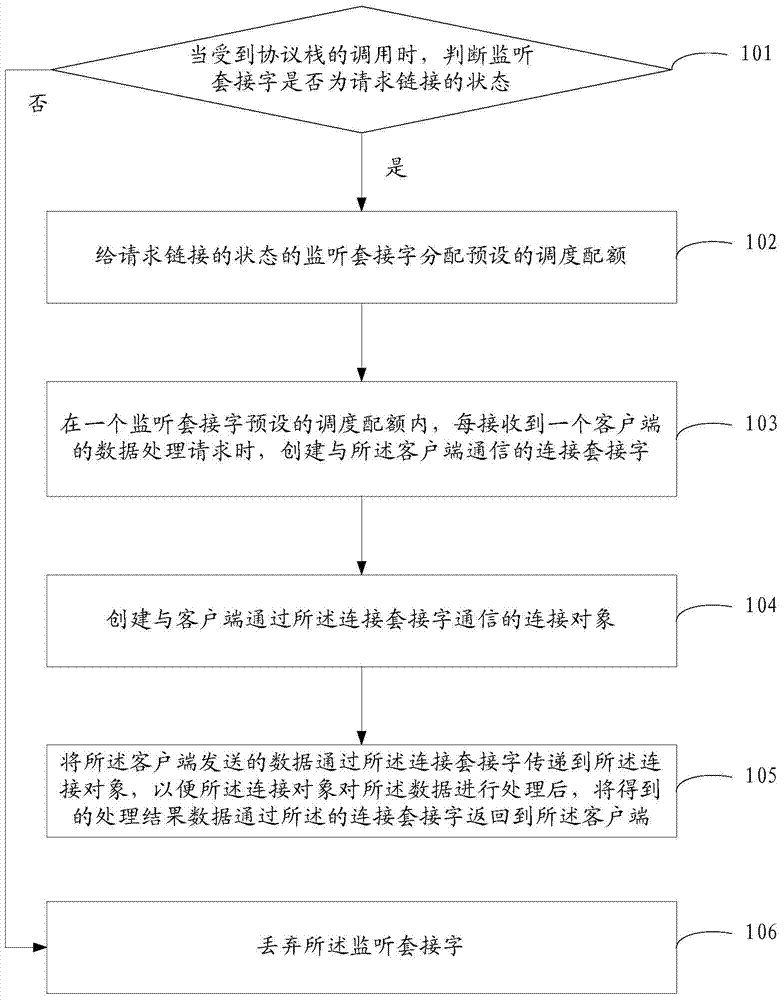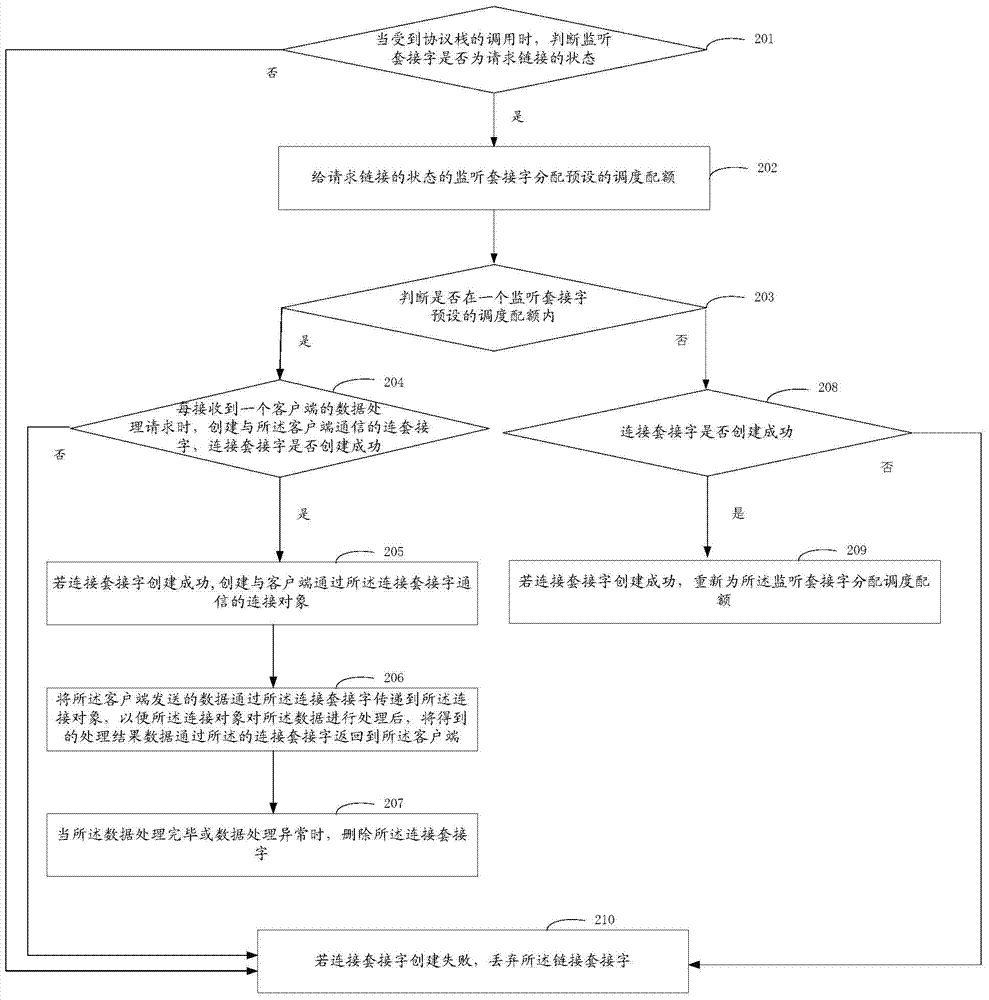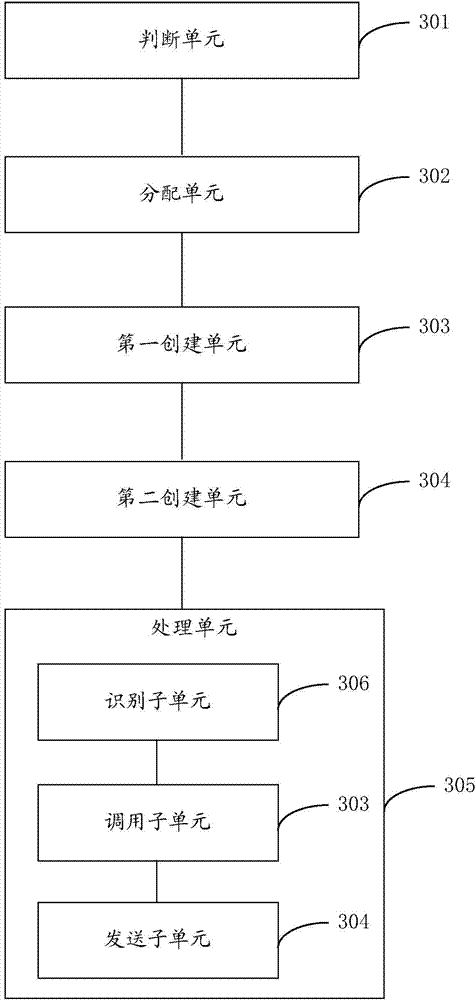Network-event processing method and device
A technology for network events and processing methods, applied in the field of network event processing methods and devices, capable of solving problems such as delays and reducing the speed of multi-core processing server event processing
- Summary
- Abstract
- Description
- Claims
- Application Information
AI Technical Summary
Problems solved by technology
Method used
Image
Examples
Embodiment 1
[0056] figure 1 It is a flow chart of Embodiment 1 of a network event processing method of the present invention, the method includes:
[0057] Step 101: When being called by the protocol stack, judge whether the listening socket is in the state of requesting connection, if yes, execute step 102, if not, execute step 106.
[0058] Each port of the server corresponds to a listening socket, and the listening socket is used for listening to at least one client connection request received by the port associated with it. When the server listening socket is initialized, set the sk_data_ready callback function of the server kernel system listening socket.
[0059] At least one client sends the connection request data to the network card of the server through a port, and the network card sends the connection request data to the protocol stack of the kernel system, and the protocol stack caches the connection request data and obtains the listening socket associated with the port , an...
Embodiment 2
[0082] figure 2 It is a flow chart of Embodiment 2 of a network event processing method of the present invention. Compared with Embodiment 1, Embodiment 2 also includes deletion processing of connection sockets. The method includes:
[0083] Step 201: When being called by the protocol stack, judge whether the listening socket is in the state of requesting connection, if yes, execute step 202; if not, execute step 210.
[0084] Step 202: Allocate a preset scheduling quota to the listening socket requesting the connection state.
[0085] The preset scheduling quota is the operation time for the data processing request of at least one client monitored by the listening socket to which it belongs.
[0086] Step 201 and step 202 are similar to the first embodiment, refer to the description of the first embodiment, and will not repeat them here.
[0087] Step 203: Determine whether it is within a preset scheduling quota of a listening socket, if yes, perform step 204, if not, perf...
Embodiment 3
[0107] image 3 It is a schematic structural diagram of Embodiment 3 of a network event processing device according to the present invention. Embodiment 3 is a device corresponding to the method described in Embodiment 1. The device includes:
[0108] The judging unit 301 is used for judging whether the listening socket is in the state of requesting connection when being called by the protocol stack.
[0109] The listening socket is used for listening to at least one client request received by the port associated with it.
[0110] The allocating unit 302 is configured to allocate a preset scheduling quota to the listening socket requesting the connection state.
[0111] The preset scheduling quota is the operation time for the data processing request of at least one client monitored by the listening socket to which it belongs.
[0112] The first creation unit 303 is configured to create a connection socket for communication with the client each time a data processing request...
PUM
 Login to View More
Login to View More Abstract
Description
Claims
Application Information
 Login to View More
Login to View More - R&D
- Intellectual Property
- Life Sciences
- Materials
- Tech Scout
- Unparalleled Data Quality
- Higher Quality Content
- 60% Fewer Hallucinations
Browse by: Latest US Patents, China's latest patents, Technical Efficacy Thesaurus, Application Domain, Technology Topic, Popular Technical Reports.
© 2025 PatSnap. All rights reserved.Legal|Privacy policy|Modern Slavery Act Transparency Statement|Sitemap|About US| Contact US: help@patsnap.com



